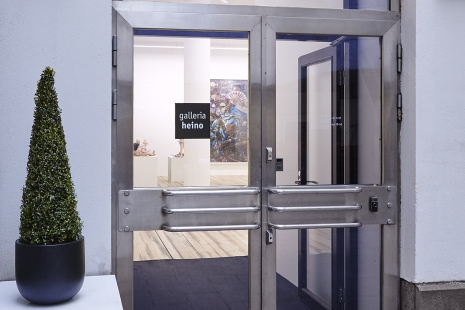The title of the exhibition, 417.5ppm, is one of pure data: this is the amount of carbon dioxide in the air of Helsinki, as measured in the early autumn of 2023. Throughout the entire show, Antas lets facts speak for themselves and allows for the viewer to independently reflect upon them.
Subtle allusion to different perceptions of time consistently recurs in Antas’s films and photographs. In his artistic process, the artist combines analogue and digital methods in a way that makes the past overlap with the future. The film Still Life (Inertia Geometry) is shot on black and white 16mm film – a format introduced exactly a century ago – but is here shown as a digital copy, projected by a silently running modern machine. The exhibition’s second film, Diurnal Landscape, is the result of the artist’s careful 3D-scans of wild nature, which turns reality into contemporary animation. Last but not least, the photographs from the series Compound Ecology show stark white 3D-prints of cut flowers, based on photographs taken over the course of many days. These digital sculptures are carefully documented by Antas in a way that pay homage to the botanical studies of the 17th century.
In his art, Antas shows us how anthropocentric our own perception of time is. In Diurnal Landscape he makes a day last for the entirety of the exhibition. The forest in the film is hit by the first rays of morning light as 417.5ppm opens. Over the course of the show, the world within the film shifts according to its own internal clock. As 417.5ppm reaches its end in October, dusk will have fallen, darkness engulfing the digital forest.
The subjectivity of time is also touched upon in Still Life (Inertia Geometry) which depicts snails moving over perfectly geometrical objects in a studio. Their horns aid them in meticulously maneuvering the unfamiliar forms surrounding them. Seeing the tactile way in which the snails experience the world, one realises the fallacy of calling them slow. In nature a myriad of different senses of time can coexist. The only speed of life that us humans can judge is our own.
Helen Korpak





